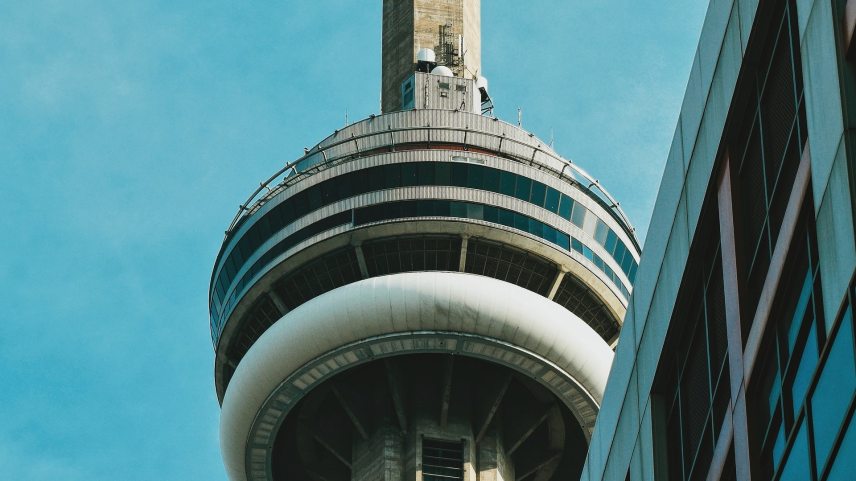Canada will need to pump the breaks to stabilize its overheated economy. That was the message from RBC Economics’ latest research on inflation. Sky-high inflation has forced central banks to adopt an aggressive rate hike schedule. Cooling inflation (and the economy) with rapid rate normalization is now the plan. The slowdown is expected to begin this summer, long before inflation will stabilize.
Canada’s Economy Looks Strong, But Expect Demand Erosion Soon
Canada’s economy has been on a tear, overstimulated by artificially low rates. RBC estimates April will “likely” report 0.3% GDP growth, above Stat Can’s 0.2% initial estimates. Alberta’s oil production is up 3% year-to-date, providing a windfall for the region (and budgets). Unemployment is at the lowest level recorded, with recorded data going back to the ’70s. These are all killer metrics at the macro level for Canada. The economy is technically booming, even if it doesn’t feel that way for many.
“….while the current economic backdrop looks very strong, rising interest rates are pushing up Canadians’ debt servicing costs. This increase will eventually cause demand erosion,” says Nathan Janzen, RBC’s assistant chief economist.
Canada Used Low Interest Rates To Juice Its Economy
Let’s revisit that “artificially low rates” point. Massive amounts of cheap capital were used to help the economy recover. It did a great job at doing that too, with countries like Canada recovering much faster than expected. Once recovered, it didn’t stop though. In fact, there’s still demand stimulus deployed right now via low rates.
That brings up the burning question, “what are low interest rates?” A lot of people think in absolute numbers, or relative to what it was last year. Some think it’s low compared to historic levels (it is very low compared this way). Others think it’s high because it’s above levels seen a couple years ago. Really, what experts look at is the interest rate in relation to the terminal interest rate.
A low interest rate is when the current rate is lower than the terminal rate. The terminal rate is a range, estimated between 2% and 3%, where monetary policy is no longer stimulus. When the overnight rate is set below the terminal rate, it helps inflation grow faster. Canada’s overnight rate is currently only 1.5%, helping demand and thus inflation. Yes, even now.
Consequently, inflation is rising — and boy-o-boy is it unusually high. The annual growth of the consumer price index (CPI) reached 7.7% in May, the highest level since 1983. It was widely believed with modern advanced central banks, we would never see such a high rate again. Now high inflation is expected to produce a big drag on the economy.
Canada Will Need To Cool Its Economy To Stabilize Inflation
If artificially low rates were consequence-free, we’d use them all the time. Unfortunately, that’s not the case. Inflation is non-productive price growth, when demand is high relative to the supply. To deal with the extra costs, households often divert funds from discretionary spending.
Fewer meals out, might help a household pay for groceries. That loss of revenue for the restaurant means they’ll have to cut back on spending. Since one person’s spending is another person’s income, this cascades into a slowdown.
“The surge in the consumer price index to 7.7% in May is cutting into household purchasing power but also putting further pressure on the Bank of Canada to hike interest rates more aggressively,” warns Janzen.
Similarly, solving high inflation involves cooling demand by raising interest rates. This raises the cost of debt, diverting discretionary spending funds to interest payments. Of course, fewer people have debt than are paid in a currency. Higher rates are the path of least erosion.
Janzen thus sees the central bank taking the path of higher rates to cool inflation. RBC’s forecast shows the Bank of Canada (BoC) and the US Federal Reserve accelerating hikes. They now see the BoC hiking by 0.75 points in July, following the US Fed this month.
Death by inflation or higher rates this summer. At least a slowdown from higher interest rates means the odds of an inflationary recession are lowering. That’s one win, sort of.

virtually no employer can keep up with inflation at this level. I believe Ontario is giving teachers and nurses something like 1.5% inflation hikes, so reduce their purchasing power by 5%+
7.7% is a joke. It’s more like 20%, but CPI is perpetually adjusted to minimize CPI gains.
Not really. CPI is correct, but CPI isn’t your cost of living. It reflects virtually no one’s cost of living.
A more important question is what’s the purpose of CPI if it wasn’t used to control interest rates and doesn’t reflect anyone’s cost of living.
“Alberta’s oil production is up 3% year-to-date, providing a windfall for the region (and budgets)”. And another hole in the climate change wall. Energy costs are heading into the stratosphere, and we’re still cheering and funding the fossil fuel industry, where no operator will fund an environmental clean-up. Canadian taxpayers are on the hook for generations to come for personal health and the environment. Sending delegates to COP27 will waste time, as we’ve already lost the race.